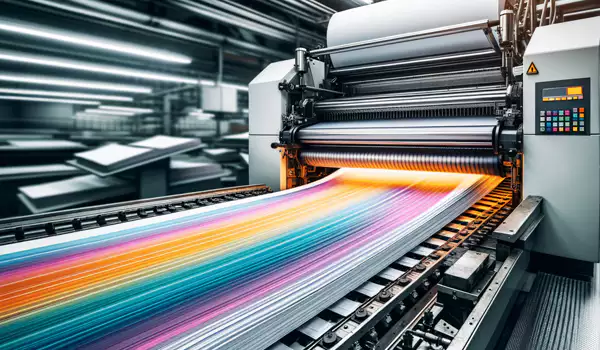RTO for Printing and Monitoring
Regenerative Thermal Oxidizers (RTOs) are widely used in various industries to control air pollution by eliminating volatile organic compounds (VOCs) from waste gases. The printing industry is one of the sectors that benefit from this technology. In this article, we will explore how RTOs are used for printing and monitoring waste gases.
RTOs for Printing Industry
The printing industry generates a substantial amount of waste gases containing VOCs, which are harmful to the environment and human health. RTOs provide an effective solution to control these emissions. The process involves redirecting the waste gases into an RTO system, where they are heated to high temperatures and oxidized. The resulting end products are carbon dioxide and water vapor, which are released into the atmosphere without causing any harm.
There are several benefits of using RTOs in the printing industry:
- RTOs are highly efficient in removing VOCs, with destruction efficiencies of up to 99%
- They are cost-effective and provide long-term savings by reducing the need for expensive air pollution control systems
- RTOs are easy to install and require minimal maintenance, making them a reliable solution for continuous operation
Overall, RTOs are a sustainable and eco-friendly option for controlling emissions in the printing industry.
Monitoring RTO Operations
Effective monitoring of RTO operations is essential to ensure optimal performance and efficiency. There are several aspects of RTO operations that need to be monitored:
Temperature and Flow Rate
Temperature and flow rate are critical parameters for RTO operations. The temperature inside the RTO chamber needs to reach a certain level to initiate the oxidation process. The flow rate of waste gases also needs to be monitored to maintain optimal operating conditions. High flow rates can result in incomplete oxidation, while low flow rates can cause overheating and damage to the system.
Pressure Drop
Pressure drop is the difference in pressure between the inlet and outlet of the RTO system. Monitoring pressure drop is essential to ensure that the system is working correctly. High pressure drops can indicate clogged filters or other issues that can affect the performance of the system.
Gas Composition
The composition of waste gases can vary depending on the printing process used. Monitoring gas composition is essential to ensure that the RTO system is designed to handle the specific type of waste gases being generated. Analyzing the gas composition can also help identify any potential issues with the printing process that may be causing excess emissions.
Effective monitoring of RTO operations can help maintain optimal performance and ensure that the system is operating as intended.
결론
RTOs are an effective solution for controlling emissions in the printing industry. They provide a sustainable and eco-friendly option for eliminating harmful VOCs from waste gases. Effective monitoring of RTO operations is essential to ensure optimal performance and efficiency. By monitoring temperature and flow rate, pressure drop, and gas composition, the system can be fine-tuned to maintain optimal operating conditions. With the increasing focus on environmental sustainability, RTOs are becoming an essential part of the printing industry’s air pollution control strategy.


회사 소개
We are a high-tech manufacturing enterprise specializing in comprehensive treatment of volatile organic compounds (VOCs) exhaust gas and carbon reduction and energy-saving technologies. Our core technologies include thermal energy, combustion, sealing, and automatic control. We have the capabilities for temperature field simulation, air flow field simulation modeling, ceramic heat storage material performance, molecular sieve adsorbent material selection, and VOCs high-temperature incineration oxidation testing.
팀의 장점
We have an RTO technology R&D center and waste gas carbon reduction engineering technology center in Xi’an, as well as a 30,000 square meter production base in Yangling. We are a leading manufacturer of RTO equipment and molecular sieve rotary wheel equipment globally. Our core technical team comes from the Aerospace Liquid Rocket Engine Research Institute (Aerospace Academy 6). Currently, we have more than 360 employees, including over 60 R&D technology backbones, including 3 senior engineers with research professor titles, 6 senior engineers, and 47 thermodynamics PhDs.
핵심 제품
Our core products include the Rotary Valve Regenerative Thermal Oxidizer (RTO) and molecular sieve adsorption concentration rotary wheel. Combined with our expertise in environmental protection and thermal energy system engineering, we can provide customers with comprehensive solutions for industrial exhaust gas treatment, carbon reduction, and thermal energy utilization under various operating conditions.
인증, 특허 및 영예
- 지식재산권 관리체계 인증
- 품질경영시스템 인증
- 환경경영시스템 인증
- 건설산업기업자격
- 하이테크 기업
- Patent for Rotary Valve Regenerative Thermal Oxidizer (RTO) for Heat Storage Incineration
- Patent for Rotary Wheel Thermal Oxidation Incineration Equipment
- Patent for Disk Molecular Sieve Rotary Wheel
올바른 RTO 장비 선택
When selecting the appropriate RTO equipment, consider the following factors:
- Determine exhaust gas characteristics
- 지역 규제 배출 표준을 이해하세요
- 에너지 효율성 평가
- 운영 및 유지 관리를 고려하세요
- Budget and cost analysis
- Select the appropriate RTO type
- 환경 및 안전 요소를 고려하세요
- Perform performance testing and validation
Our Service Process
Our service process includes:
- Preliminary consultation, on-site inspection, and needs analysis
- 솔루션 설계, 시뮬레이션 모델링 및 솔루션 검토
- 맞춤형 생산, 품질 관리 및 공장 테스트
- 현장 설치, 시운전 및 교육 서비스
- 정기적인 유지관리, 기술지원, 예비부품 공급
We are proud to offer a one-stop solution with our professional team providing customized RTO solutions to our customers.


저자: 미야
